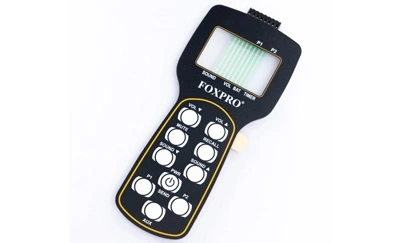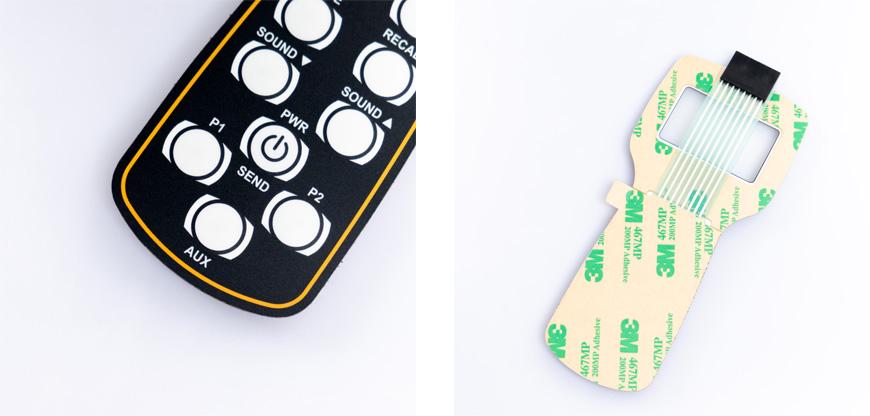
In today's ever-evolving technological landscape, the demand for efficient and reliable user interfaces is paramount. Heat sealed membrane switches have emerged as a popular choice for a wide range of applications, from consumer electronics to industrial machinery. These versatile components provide a seamless interaction between users and devices, offering durability, flexibility, and ease of integration. In this comprehensive guide, we will delve deep into the world of heat sealed membrane switches, exploring their construction, benefits, applications, and much more.

1. Introduction to Heat Sealed Membrane Switches
2. Understanding Membrane Switch Technology
What Are Membrane Switches?
The Role of Heat Sealing
3. Construction of Heat Sealed Membrane Switches
Layers of a Membrane Switch
The Heat Sealing Process
4. Advantages of Heat Sealed Membrane Switches
Durability and Longevity
Cost-Effective Solution
Customization Options
5. Applications of Heat Sealed Membrane Switches
Consumer Electronics
Medical Devices
Industrial Equipment
6. Design Considerations for Membrane Switches
Ergonomics and User Experience
Environmental Factors
7. Maintenance and Care
Cleaning and Hygiene
Preventing Wear and Tear
8. Comparison with Other Switching Technologies
Membrane vs. Mechanical Switches
Membrane vs. Capacitive Touch
9. Future Trends in Membrane Switch Technology
Integration with IoT
Miniaturization and Flexibility
10. Conclusion
11. Frequently Asked Questions (FAQs)
Heat sealed membrane switches, also known as membrane keypads, are user interface components that have gained widespread recognition for their efficiency and versatility. These switches consist of multiple layers of flexible materials, including polyester and polycarbonate, that are assembled together using a heat sealing process. The result is a robust and user-friendly interface that can be customized to meet the specific needs of various industries.
What Are Membrane Switches?
Membrane switches are user interface devices that use a thin, flexible membrane as the primary actuation element. They are commonly found in electronic devices such as microwave ovens, remote controls, and medical equipment. These switches are known for their tactile feedback and ease of use.
The Role of Heat Sealing
Heat sealing is a crucial step in the manufacturing of membrane switches. It involves applying heat and pressure to bond the layers of the membrane together, ensuring durability and resistance to environmental factors.
Layers of a Membrane Switch
A typical heat sealed membrane switch consists of several layers, including a graphic overlay, spacer, and circuit layer. Each layer plays a specific role in the switch's operation and durability.
The Heat Sealing Process
The heat sealing process involves precise temperature and pressure control to create a strong bond between the layers. This process ensures that the membrane switch can withstand repeated use and environmental conditions.
Durability and Longevity
Heat sealed membrane switches are known for their robustness, making them ideal for applications where frequent use is expected. They can withstand millions of actuations without degradation.
Cost-Effective Solution
Compared to other interface options, such as mechanical switches, membrane switches offer a cost-effective solution without compromising on performance.
Customization Options
Membrane switches can be customized in terms of design, graphics, and tactile feedback, allowing manufacturers to create a unique user experience.
Consumer Electronics
In the consumer electronics industry, heat sealed membrane switches are commonly used in products like remote controls, game controllers, and kitchen appliances.
Medical Devices
Medical devices rely on membrane switches for their reliability and ease of cleaning, making them a vital component in the healthcare sector.
Industrial Equipment
Industrial machinery often incorporates heat sealed membrane switches due to their durability and resistance to harsh environments.
Ergonomics and User Experience
Designers must consider user comfort and ease of use when creating membrane switch interfaces, ensuring a positive user experience.
Environmental Factors
Membrane switches can be designed to withstand extreme temperatures, moisture, and chemicals, making them suitable for various environments.
Cleaning and Hygiene
Proper cleaning and maintenance are essential to prolong the life of heat sealed membrane switches, especially in applications with strict hygiene requirements.
Preventing Wear and Tear
Regular inspection and preventive measures can help prevent wear and tear, ensuring consistent performance over time.
Membrane vs. Mechanical Switches
We'll compare heat sealed membrane switches with traditional mechanical switches, highlighting the advantages of each.
Membrane vs. Capacitive Touch
Explore the differences between heat sealed membrane switches and capacitive touch interfaces in terms of sensitivity and responsiveness.
Integration with IoT
Discover how membrane switches are evolving to become an integral part of the Internet of Things (IoT) ecosystem.
Miniaturization and Flexibility
Learn about the ongoing efforts to make membrane switches smaller, more flexible, and adaptable to new applications.
In conclusion, heat sealed membrane switches have proven to be an invaluable component in the realm of user interface technology. Their durability, customization options, and versatility have made them a preferred choice across various industries. As technology continues to advance, we can expect membrane switches to play an even more significant role in shaping our interactions with electronic devices.
Are heat sealed membrane switches suitable for outdoor use?
Yes, they can be designed to withstand outdoor environments.
Can I get a custom design for a membrane switch for my product?
Absolutely, membrane switches are highly customizable.
Do membrane switches require special maintenance?
Regular cleaning and inspection are recommended for optimal performance.
Are membrane switches more cost-effective than mechanical switches?
In most cases, yes, membrane switches are a cost-effective option.
How long do membrane switches typically last before needing replacement?
Heat sealed membrane switches can last for millions of actuations, depending on usage.